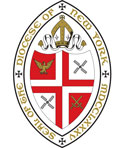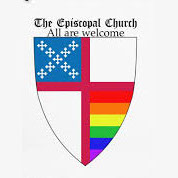Podcast: Play in new window | Download (14.2MB)
Subscribe: Apple Podcasts | RSS
So we’ve known for years that there’s a war on Christmas. But now, there’s a war on Advent as well. Just yesterday I went to the store and the clerk said, Happy Holidays. I shouted back to her, Repent! For the kingdom of heaven has come near! She gave me a blank look and told me to have a nice day. I was outraged. Does she not know the proper Advent greeting??
You good church people all know the Advent greeting, of course. I say to you, You brood of vipers! And you shout back, Repent! Let’s practice just to be sure we have it down…
So we often talk in a sort of handwringing way about how the secular world doesn’t get Advent, that everyone is all about the Christmas thing while we in the church are still trying to wait. The world is throwing tinsel about, buying too many things and consuming too many calories, but we know that there’s more to focus on than that. We know that this season is as much about the advent of the second coming of Christ, the end time, as it is about the baby in the manger. And we keep the church décor sober and restrained, and provide space and settings for quiet reflection, so we can remember that – something even non-church people appreciate, for we all need some silent night in our hectic and overstressed world.
But in our events calendar at church, we don’t always acknowledge that Advent is a season with two faces. One face is a sweet and lovely one, preparing for the birth of a baby, a vision of peace and joy and all creation singing together. But the other face is a fierce one, with winnowing forks and threshing floors, axes and fire, judgment and wrath. It’s no surprise that the first set of images are what we hear most about at this time, in our carols and cards; what is surprising is that we allow ourselves to be subjected to the other set of images every Sunday in church. We all like the contemplative time, sure. But couldn’t we just stop there, in quiet and candlelight? What does a ferocious prophet in camel’s hair have to commend him, compared with the animals gathered around the softly lit stable? The church would be a lot more engaging and attractive, surely, if we could just ignore this other part of Advent.
But here he is, roaring out at us as he does every year in our Advent gospel readings. John the Baptist, in all his crazy glory, the anachronism of the season. So let’s consider for a moment how he came across to folks 2000 years ago. If we lived in 1st century Palestine, of course, we wouldn’t have inflatable Santas or even Bing Crosby singing to us. Entertainment of any kind would be in short supply, at least compared with our over-saturated culture. So if we lived in Jerusalem and we heard there was some wild prophet out in the wilderness, we might well go out to see…particularly one who was preaching about the kingdom of God coming close at last. Ever since the early prophets the Jews had been waiting for news of the king to come, who would finally bring about God’s reign on earth. The prophets didn’t always agree about what that reign would look like, exactly, or who that king would be – but all of them told of real justice being fulfilled, God’s way replacing flawed human ways and righting all the wrongs of the world once and for all. And some painted beautiful pictures like the one we heard from Isaiah today, all of creation being made new, the wolf living with the lamb, the lion and the ox eating together, death and destruction and the red tooth and claw of nature themselves being destroyed. So if we heard there was somebody out baptizing in the wilderness, it was worth going out to hear him.
And there we’d see this John as a typical prophet with a capital P – living in the wilderness, wearing rough clothes and eating wild food, preaching about repentance. And like any prophet, saying some pretty harsh things to people in power. John was telling off all kinds of people he thought weren’t really repenting properly…which, as it turned out, was pretty much everybody. Instead of just tearing into the kings and leaders and Gentile heathen, this John was warning everyone of the need to bear fruit worthy of repentance, and then making it clear that it had better happen now, because the Messiah was coming and he was going to sort things out pretty fast and final. Those crowds might have wondered just what had happened to that old prophetic picture of the lion and the lamb and the comforting of Israel, and the promise that Israel would finally come into her own glory and rid herself of all her oppressors. Instead of, God’s going to make everything the way you want it, they were hearing, you’ve got to make some big changes in yourself, right away. They might wonder just what kind of hope and expectation they could hold onto. And we in the 21st century, looking around our world and hearing John’s words today, might just wonder that as well.
We say often that Advent is the season of hope. But I wonder just what we think we mean by that. Is there something we hope for? What does it mean for Christians to hope? Often when we talk about being hopeful, we mean that we hope for something good. We are hopeful in desiring a certain result – hope is a feeling about something that is to come. I hope I get this job, I hope she likes me, I hope it isn’t cancer. We hope for the lion and the lamb to lie down together, and the sweet mother and child, and the promise of a happy ending to all of the hard stuff we go through here on earth.
But there is nothing that feels particularly hopeful in pondering images of separating the wheat from the chaff and burning in unquenchable fire. John the Baptist cries out, ‘Repent, for the kingdom of heaven has come near.’ Prepare the way for the Lord, bear worthy fruit, put your house in order, for the reckoning time is nigh. And suddenly it feels like we’re in Lent – when we hear ‘repent,’ we start thinking of fasting and sackcloth and other things that just don’t fit within our holiday vision of velvet and sugarplums. But to repent doesn’t have to include any of that – ‘repent’ simply means to turn, as our Presiding Bishop’s Way of Love reminds us. We turn away from what separates us from God and turn towards union with God. We turn our gaze, our focus, our orientation towards God, instead of scattering ourselves out to all those lesser gods in our lives.
And I wonder if this isn’t really the hope Advent is meant to nurture in us. Hope not as just a feeling about what is to come, but as an action right now, a willed state of being – taking ourselves by the shoulders and turning ourselves to face the one who loves us. Hope means dropping the other objects of our fixation, our worries and anxieties, our to-do lists, our frustration with people and anger at the problems of the world. We choose not to despair, choosing to focus on the source of love and life rather than on all the reasons we see not to believe.
So what might that turning, that repentance, look like for us this year? I’ll give you one suggestion, one I’m still trying to implement myself. One of the gifts of life in a monastery is the regular call to prayer – periods of time throughout the day marked for worship and not work. The traditional Benedictine pattern had seven such times for prayer in a 24 hour cycle; monastics today might have fewer of them, or require a time of individual prayer rather than of corporate worship. But the point is the same, that at certain designated times throughout the day, a bell rings, and work stops. Whatever you have been occupied with at that point is put down, and you go instead to prayer. (Our Muslim siblings keep this practice for everyone, in the call to prayer that rings out over towns and cities at certain times in the day.) When the bell rings, when the call to prayer is given, you stop and pray.
We have these infernal devices that we carry around with us wherever we go. They have alarms that you can set on them. So try this: set yours to go off every two hours, some nice chime sound, and when it goes off, stop what you are doing, turn, and pray. It doesn’t have to be a long time, a full prayer service; just a few moments of lifting up from what you have been focusing on – the work, the worry, the news – and turning to God. Just sit and look, and be looked at, be seen, by God. And then, in a few moments more, go back to what you were doing, with a new heart. Enough of this, and I promise you, something in you will change.
And who knows, when that bell chimes, someone next to you might want to know what it’s for. What an opportunity to let your turning help others as well. That’s what John the Baptist and all the other prophets before and after him were doing, after all: turning to face God themselves, and then bringing others around them to do so as well. Like taking a friend by the shoulders and pointing them to see a constellation in the night sky – you put them in front of you and point past them to what you see and say, there, see it? We point each other to see God, we turn to gaze in the right direction. Even as here in church we all turn and face God together.
To repent, to turn towards God and live in that direction, is what Christian hope really is about. It doesn’t mean we always feel the sweetness of the lion and lamb picture, and it certainly isn’t always easy – after all, we still see reasons for despair all around us. Paul talks of steadfastness and encouragement in his letter to the Romans – we need the witness of scripture and of the community of faith to continue to hope, to turn ourselves over and over again towards God. To actively choose to trust that Christ is real, that redemption does happen, that the little baby in the manger and the man on the cross are the real signs of God loving and living in the world among us.
So this Advent, I say to you: repent. Turn yourself toward God, wherever it is you see God. And if you can’t see God, ask somebody to show you where they see God, to take you by the shoulders and point you in the direction of God, to walk with you in that direction. God is there if you look to see. Loving us, always.




